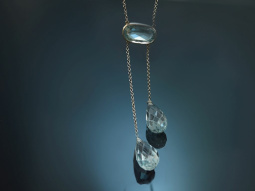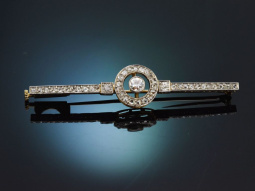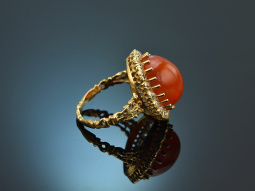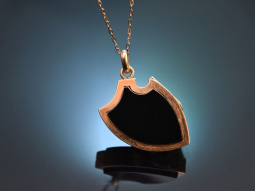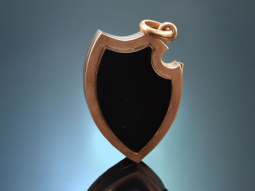Turn of the Century & Art Nouveau
(1890 - 1910)
Art Nouveau, which developed at the end of the 19th century, introduced a new, original design language to Europe. Flowing, decoratively curved lines, extensive vegetal ornamentation and organic forms borrowed from nature and Japanese art characterised the design of jewellery, furniture, architecture, graphics and fashion during this period. The outstanding craftsmanship with which the objects of this period were produced and realised was also striking. Find out more
The era of Art Nouveau
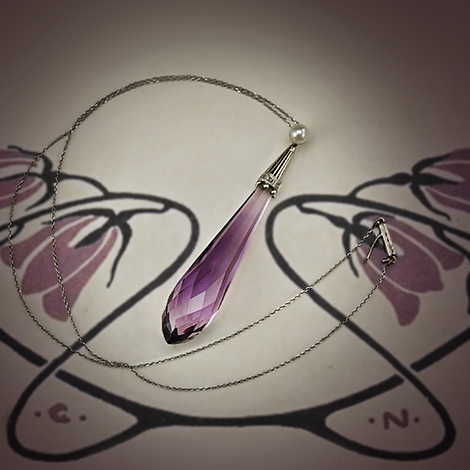
Art Nouveau represented a conscious departure from historism. Completely new, previously unseen forms inspired by geometry and nature were now postulated. According to the ideals of Art Nouveau, life was to be designed as a total work of art: from architecture, furniture and furnishings to clothing and jewellery. The German name of the movement (Jugendstil) was derived from the magazine ‘Jugend - Münchner illustrierte Wochenschrift für Kunst und Leben’.
A unity of art and life
The major social upheavals at the turn of the century fundamentally changed everyday life throughout Europe. Art was also strongly influenced by this new zeitgeist. One aim of Art Nouveau artists was the integration of art into everyday life. The boundaries between art and craft were to become blurred, and the industrial production of goods and commodities was rejected as ‘soulless’. However, it was not just about pure ornamentation; the functionality of an object or building was much more important. Accordingly, Art Nouveau found expression everywhere, from architecture and furniture design, to painting and sculpture, to jewellery and glassware.
What characterises Art Nouveau jewellery?
Antique Art Nouveau jewellery can be recognised by characteristic features such as the catchy floral shapes and delicate scenes, its typical ornamentation of soft curves and waves and its love of handcrafted detail. It is focussed clearly on the artistic design and the original ornamentation, not necessarily on the value of the materials. This meant that ‘base’ materials such as horn, mother-of-pearl or enamel were pretty common.
The design of Art Nouveau jewellery is unmistakable: in addition to natural motifs such as flowers, blossoms or insects, faces and figures with long, flowing hair as well as naked female bodies were also often depicted. Frequently recurring patterns include spirals or wavy lines, which come together to form symmetrical ornaments or geometric decorations.
Many designs were created by imitating flora and fauna, but these were also always to be understood as symbols. Flowers, for example, epitomised the female being with all its many facets, while the eye, for example, symbolised the battle of light against darkness.
Art Nouveau as an international phenomenon

Art Nouveau spread throughout Europe towards the end of the 19th century and was given different names in different countries: in Germany, for example, it was called Jugendstil, in Austria Secessionstil or Reformstil, and in England the movement was referred to as Arts and Crafts. Consequently, Art Nouveau cannot be defined as a completely uniform era, as it was interpreted and realised differently in different countries.
Art Déco ended the Art Nouveau era in the 1920s, but based its own existence on its geometric design language.
Art Nouveau jewellery at Halsbandaffaire
We invite you to discover this very special era of jewellery at Halsbandaffaire: All of our pieces are unique and come with a certificate of authenticity. Benefit from our many years of expertise and let us advise you online or on site in Schwabing on our selected range of antique jewellery.











